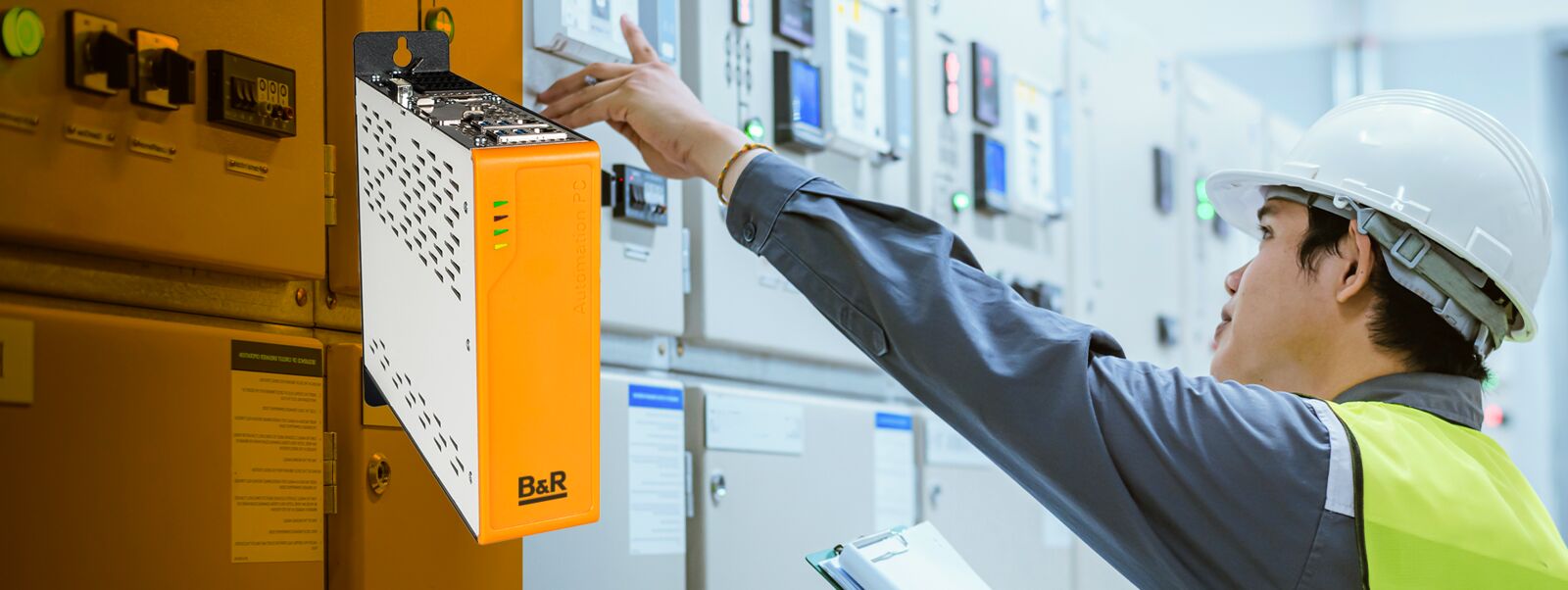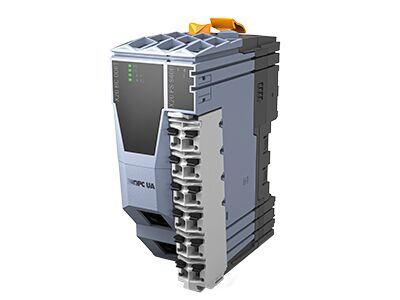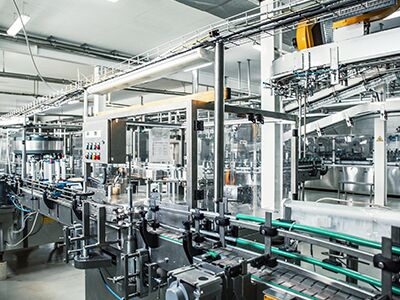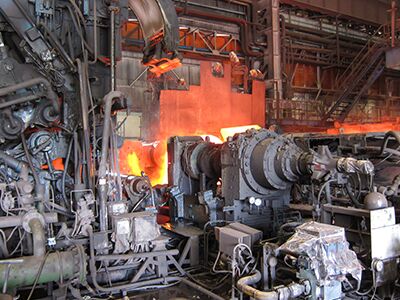
Machine and plant operators are utilizing the Industrial Internet of Things (IIoT) more and more often. For customers to take full advantage of their IIoT-connected factories, the machinery and equipment must be able to connect to the cloud. This is done using edge devices. Energy consumption must be tracked, equipment must be quicker and easier to service, and it must be possible to measure and compare asset performance. The Industrial IoT promises all this and more with highly automated, ultra-connected machinery and production lines.
The Industrial IoT brings many benefits, but there are also a number of challenges such as security, privacy, data integrity and interoperability that need to be addressed. Solving these challenges requires careful planning, investing in the right technology like the APROL Edge Controller and working with experienced solution providers like B&R to successfully implement the IIoT in industrial operations.
What is edge computing? With the Industrial IoT, users can obtain more information from their machines and plants. Whether a machine part is showing signs of wear and when it will fail, for example. Edge computing is a method of collecting large amounts of data near its source so that it can be compressed before being passed on to higher-level systems. An edge device is thus the link between the real-time capable machine level and process level (operational technology, OT) and IT.

Optimization
The need for more effective and efficient processes in industry is enormous: Operating data and energy values must be collected in order to identify potential for optimization and upgrade the performance of different machines comparably.

Improving quality
Automatic acquisition and processing of a wide range of operating and quality data enables deviations from target values to be detected very early in the production phase. One helpful method is to compare real-time data from the same machine.

Scalability
Many existing plants have grown naturally with additional machinery. The associated expansions to capacity lead to bottlenecks in upstream and downstream processes. Dynamic interaction of the machines in the plant network must be examined in order to remove bottlenecks.
APROL Edge Controller – Robust, powerful and ready for future challenges
The answer to all these questions and the solution to challenges is the B&R APROL Edge Controller. Using the Edge Controller as part of the Industrial IoT ecosystem allows companies using industrial automation to optimize their processes, increase efficiency and improve maintenance by drawing on real-time data and local intelligence. This can help increase overall performance and the reliability of production equipment.
The APROL Edge Controller is based on robust and powerful Automation PCs. These PCs are equipped with powerful Intel processors from the highest performance class and are therefore well suited for the most demanding tasks such as machine learning and big data analyses. The Edge Controller runs a hardened operating system used to preprocess the data. The general-purpose operating system (GPOS) is an enterprise Linux distribution with a long-term support guarantee. B&R Hypervisor makes it possible to simultaneously run a real-time operating system on the Edge Controller. The edge device is a full-fledged industrial controller with cycle times in the millisecond range. Real-time programs can be created in all IEC 61131 languages. This makes it easy to map even complex control systems. An unlimited number of I/O modules or controllers can be connected via the POWERLINK industrial Ethernet protocol or other fieldbus systems.

Monitors
Control computers
Standard /Industrial Ethernet
Multi-monitor display
Network interface cards


OPC UA bus controller / IIoT gateway
The X20BC008T bus controller offers integrated certificate processing, making it one of the first field devices to meet the security requirements of modern IT systems. This is the key to true IT/OT convergence and many IoT applications.


Collecting and compressing data
In order for data analysis to provide useful information, it must be based on operations and production data that is collected seamlessly and centrally. With the APROL Edge Controller's PDA (Process Data Acquisition) function, all raw data relevant to production can be collected in real time.

Archiving data
The APROL Edge Controller is equipped with a NoSQL database (APROL ChronoLog) to record continuous signals and events. The user also has an SQL database at their disposal (MariaDB) for use with the application.

Analyzing data
The APROL Edge Controller offers numerous options for evaluating the acquired data. The respective functions are available in control modules. The user has a modular choice of control modules for his application.

Visualizing information
If required, the APROL Edge Controller can also be used to view data, results and evaluations. The integrated web-based real-time HMI solution – mapp View – makes it easy to create HMI pages. Because mapp View is based on HTML5, CSS3 and JavaScript, the resulting HMI applications are platform-independent, future-proof and can be viewed on any web-enabled device.

Orchestration
The goal of edge computing architecture is for the algorithms to process machine data securely and reliably in real time with cycle times in the ms range, regardless of the state of the infrastructure. For this, all functionalities of a modern control system must be available to the application. Since the APROL Edge Controller is also a full-fledged industrial controller, that's no problem at all.

Industrial security
Edge devices sit at the threshold between IT and OT, making them a prime target for hackers looking to gain entry into these systems. For this reason, the APROL Edge Controller has multiple protections against IT threats.

Control
Numerous ready-made models for control tasks are available in the APROL Edge Controller. For processes with complex interdependencies, the Edge Controller can rely on its Advanced Process Control function. Model predictive control (MPC) is used for this purpose. Using a model of the process, the controller automatically makes calculations to optimize control. Control errors are automatically minimized.

Cloud connection via MQTT
The APROL Edge Controller offers a wide range of communication options: Devices and systems from other manufacturers can be easily connected to the Edge Controller. For communication with higher-level systems, an OPC UA server and client as well as an MQTT client are included on the Edge Controller as standard features. Its small code footprint and low bandwidth requirements have established MQTT as the standard protocol for cloud service providers.


Food processing and canning
Special machines from a wide range of manufacturers are used in food processing. The controllers installed in the machines have different communication protocols. The APROL Edge Controller is used to collect and process data and to evaluate the overall equipment effectiveness (OEE). This also enables seamless product and batch traceability. The graphical line visualization helps monitoring the system status.

Collecting rolling mill data
A global operator of rolling mills has equipped several dozen globally distributed sites with APROL Edge Controllers that deliver their operating data via MQTT to a central data collection system using a cloud solution. This global database is not only used to determine productivity and quality, but also forms the central basis for planning maintenance work.
